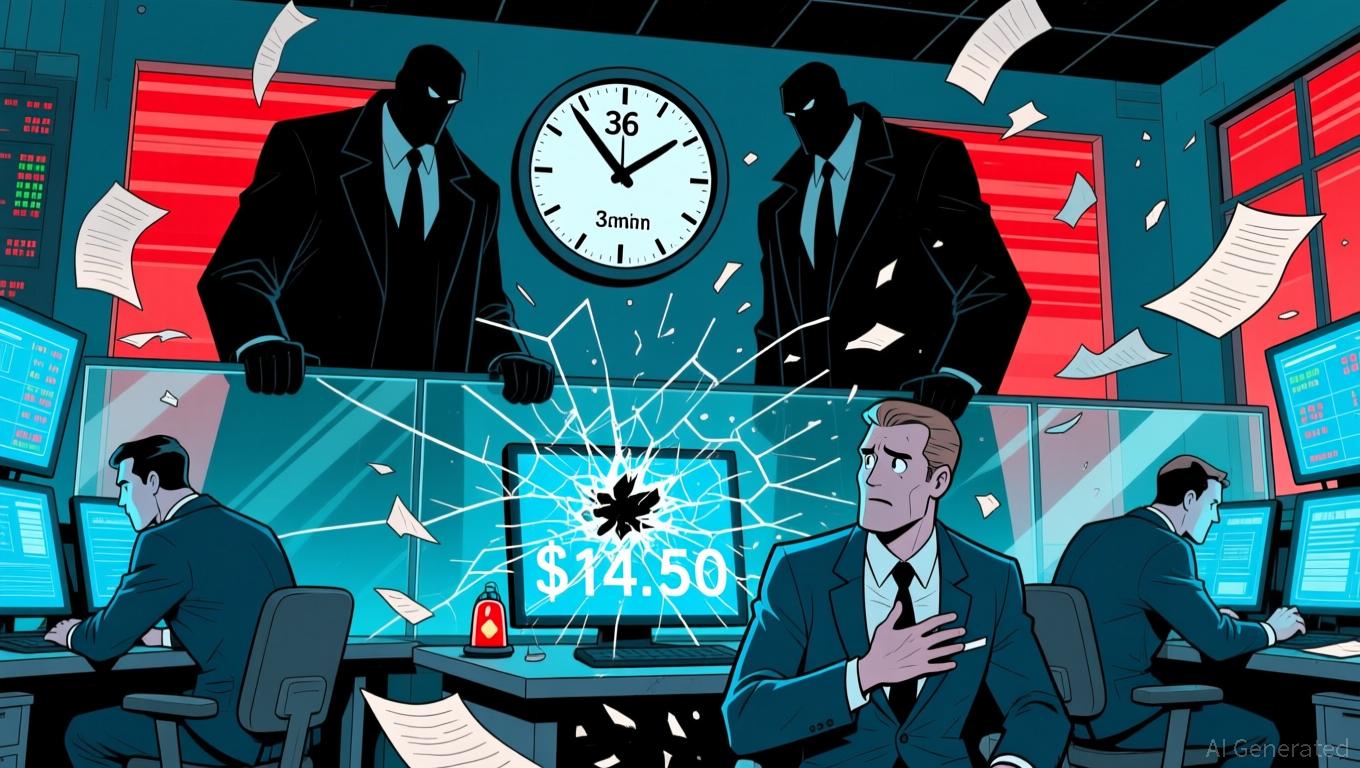Vitalik Buterin Backs ZKsync: Igniting Ethereum Layer 2 Innovation and Ushering in the Next Era of DeFi
- Vitalik Buterin's endorsement of ZKsync's Atlas upgrade accelerates Ethereum's ZK-based scalability strategy, positioning ZKsync as a key DeFi infrastructure player. - The upgrade achieves 15,000+ TPS with near-zero fees via ZK Stack, enabling 30% stablecoin dominance and bridging Ethereum's L1-L2 liquidity gaps. - Institutional adoption surges as ZK token gains 50% post-endorsement, supported by $15B in ZK-related DeFi inflows and StarkNet's TVL tripling in Q4 2025. - Upcoming Fusaka upgrades (30,000 TP
Technical Foundations: ZKsync's Atlas Upgrade and the
ZK
Stack
Launched in October 2025, ZKsync’s Atlas upgrade marks a significant advancement in Layer 2 (L2) scalability. By enabling
The technical impact is substantial. For example, the modular ZKsync OS and ZK rollups have

Market Dynamics: Institutional Adoption and Capital Flows
The Atlas upgrade has sparked a notable rise in institutional trust. ZKsync’s deflationary tokenomics—which channels revenue into buybacks, token burns, and staking rewards—has
Industry experts point out that ZKsync’s strength is its ability to combine Ethereum’s security with L2 performance. As a Bitget report notes, "
The Fusaka Upgrade: Technical Roadmap and Ecosystem Synergies
Although the zkSync team has yet to officially unveil the Fusaka upgrade, Ethereum’s broader Fusaka plan—set for December 3, 2025—aims to further strengthen ZKsync’s market position. Notable features include PeerDAS (EIP-7594), which
Additionally, Verkle Trees will make data verification easier for lightweight clients,
Ethereum Foundation's Role: Personal Endorsement vs. Institutional Neutrality
It’s important to note that the Ethereum Foundation has not made any official endorsements of ZKsync for 2023–2025. Still, Buterin’s personal support—described as “emphasizing the significance of ZKsync’s contributions to the wider Ethereum ecosystem”—
This situation illustrates a larger pattern: Ethereum’s progress is increasingly shaped by community-driven innovation rather than centralized leadership. While this decentralization is a strength, it can also bring volatility, as market sentiment often depends on key figures and project outcomes.
Investment Implications: A High-Conviction Play for 2026
From an investor’s standpoint, ZKsync’s alignment with Ethereum’s ZK-focused trajectory and the trend of institutional adoption make it a strong candidate for high-conviction investment. The technical strength of the Atlas and upcoming Fusaka upgrades, together with a deflationary token model and $15 billion in DeFi inflows, point to promising prospects for the ZK token.
Nonetheless, there are risks. The lack of official support from the Ethereum Foundation could invite regulatory challenges or competition from other L2 projects. Additionally, the success of the Fusaka upgrade will depend on smooth integration with Ethereum’s mainnet, which could face unexpected technical issues.
Conclusion
Vitalik Buterin’s backing of ZKsync goes beyond mere symbolism—it serves as a strategic endorsement of ZK-based scaling as the future of Ethereum. By solving scalability issues, cutting costs, and drawing institutional investment, ZKsync is transforming DeFi’s capital landscape and reshaping the L2 ecosystem. For those looking ahead to 2026, ZKsync offers a compelling blend of technical progress, market momentum, and favorable macro trends.
Disclaimer: The content of this article solely reflects the author's opinion and does not represent the platform in any capacity. This article is not intended to serve as a reference for making investment decisions.
You may also like
Bitcoin News Today: Bitcoin ETFs See $1.1B Outflow, While New Investments Flow Into XRP and Solana Funds
- U.S. Bitcoin ETFs lost $1.11B in three weeks, with BlackRock's IBIT and Grayscale's BTC leading outflows amid Bitcoin's six-month low at $95,200. - Analysts link redemptions to macroeconomic uncertainty and profit-taking after October's $126,000 rally, while Harvard tripled its IBIT holdings to $442.8M. - XRP and Solana ETFs attracted $255M in new capital, highlighting crypto diversification as Ethereum ETFs also faced $259M in single-day outflows. - Market debates Bitcoin's $94,000 support level amid th

Chainlink's Value Plummets Even as Ecosystem Surges by $26 Trillion
- Chainlink (LINK) plummeted to a 2.5-month low below $14.50, breaking critical support with 118% 24-hour volume spikes signaling institutional selling pressure. - A 360,000-token liquidation cascade and 27% unrealized loss in Chainlink Reserve holdings highlight market fragility despite $26T+ oracle-driven transaction value. - Institutional adoption via Stellar partnerships and tokenized bonds offsets short-term bearishness, yet RSI at 41.72 and 58.79% Bitcoin dominance signal ongoing altcoin weakness. -

Meme Coin Frenzy Sparked by Whale’s $19 Million Wager and Trump’s Support for Crypto
- A crypto whale injected $19.86 million into 22 meme coins in one hour, reflecting heightened speculative activity amid Trump-era crypto-friendly policies. - Trump-linked Bitcoin miner Hut 8 Corp reported 460% revenue growth, leveraging low-cost operations and 4,004 bitcoins ($400M value) to capitalize on market trends. - Canary Capital's MOG ETF filing triggered a 17% market cap surge for the meme token, highlighting institutional interest in community-driven crypto assets. - Analysts warn of regulatory

India’s Blockchain Strategy: National Tokenisation to Upgrade Financial Infrastructure
- India's economic advisor meets Polygon and Anq Finance to discuss tokenisation frameworks and sovereign digital assets for financial modernisation. - Proposed Asset Reserve Certificate (ARC) model uses government securities as collateral, aiming to create secure, sovereign-backed digital settlement units. - Discussions highlight tokenisation benefits like faster settlements and reduced risks, while stressing regulatory alignment with existing financial infrastructure. - Collaboration positions Polygon as
